Why Cinema Was Called The Silver Screen
The Silver Screen Legacy – A Shimmering Symbol Of Film
The phrase silver screen was not invented as a metaphor but as a literal description of cinema technology. Early projection screens were coated with metallic particles, often silver or aluminum, to enhance brightness and contrast. This coating allowed weak projectors to cast vivid images that audiences could see clearly even in large theaters. The glow of these screens gave films a luminous quality that felt magical. Over time, the phrase silver screen became shorthand for the entire film industry. It really was movie magic.
It carried connotations of glamour, artistry, and cultural prestige. Stars were celebrated as icons of the silver screen, linking their fame to the shimmering projection surface. Even as technology advanced, the nickname persisted. Today, the silver screen remains a poetic reminder of cinema’s origins.
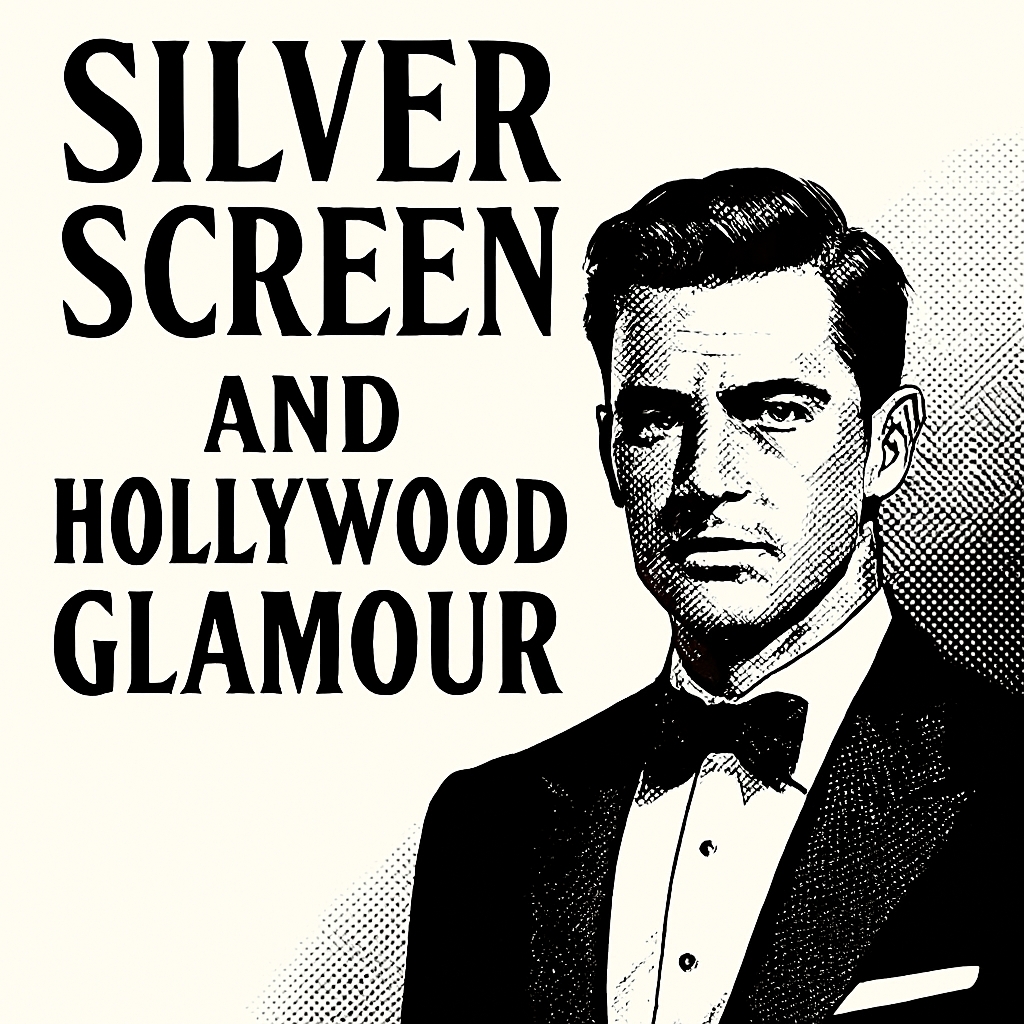
Projection Technology – The Birth Of The Silver Screen
Cinema in its earliest years faced challenges with dim and unclear images. Innovators discovered that silver-coated screens reflected light more efficiently than plain fabric. This breakthrough allowed films to appear brighter and sharper. The reflective coating also enhanced contrast, making shadows deeper and highlights more luminous. Audiences were captivated by the glow that seemed to bring pictures to life. The silver screen thus began as a technical solution to a practical problem. Its brilliance transformed the viewing experience into something unforgettable. The phrase quickly spread beyond technology into cultural language. It became a symbol of cinema’s magic.
| Feature | Benefit | Audience Impact |
|---|---|---|
| Silver Coating | Increased reflectivity | Brighter images |
| Contrast Enhancement | Sharper visuals | Greater clarity |
| Light Efficiency | Better use of weak projectors | Larger audiences |
| Cultural Glow | Sparkling effect | Sense of enchantment |
Cultural Meaning – From Technology To Metaphor
The silver screen soon became more than a technical term. It evolved into a metaphor for the glamour of Hollywood. Stars were described as icons of the silver screen, linking their fame to its glow. The phrase carried connotations of elegance and prestige. Audiences embraced it as part of cinema’s identity. Even as new materials replaced silver, the nickname endured. It symbolized the timeless magic of storytelling through film. The silver screen became shorthand for the entire industry. Its meaning expanded far beyond projection technology.
- Silver screen symbolized glamour and prestige
- It became shorthand for the film industry
- Stars were linked to its glow
- Audiences embraced the phrase emotionally
- It carried cultural weight beyond technology
- It reinforced Hollywood’s sophistication
- It became part of everyday language
- It persisted after silver coatings faded
- It remains a timeless metaphor
- It continues to inspire cinema culture
Historical Timeline – Evolution Of The Silver Screen
The silver screen’s journey reflects both technological progress and cultural adaptation. In the late 19th century, silver-coated screens were introduced to improve projection. By the early 20th century, they became standard in theaters worldwide. As Hollywood grew, the phrase silver screen entered popular speech. Even when aluminum and other reflective materials replaced silver, the nickname endured. The persistence of the term showed its symbolic power. It was no longer tied only to technology but to cinema itself. Audiences continued to use it as a whole of the industry as a synonym for film. The phrase carried forward the glamour of Hollywood’s golden age.
| Era | Development | Impact |
|---|---|---|
| Late 1800s | Silver screens introduced | Improved clarity |
| Early 1900s | Widespread adoption | Defined cinema experience |
| 1920s | Hollywood embraces phrase | Glamour association |
| 1930s | Color films emerge | New screen materials |
| Modern Era | Digital projection dominates | Term persists symbolically |
Technical Advantages – Why Silver Was Essential
Silver-coated screens offered unique benefits that defined early cinema. They reflected light more efficiently than plain surfaces. This was crucial when projectors lacked power. Silver screens allowed films to be shown to larger audiences without losing brightness. They also improved contrast, making shadows deeper and highlights more luminous. These qualities gave films dramatic visual impact. Without silver screens, early cinema might not have captivated audiences as strongly. Their brilliance helped establish film as a cultural phenomenon. The glow that only cinema had became inseparable from the magic of movies.
- Silver improved reflectivity
- It enhanced contrast in black-and-white films
- Weak projectors became more effective
- Larger audiences enjoyed clear images
- Shadows appeared deeper and dramatic
- Highlights glowed with intensity
- Films gained visual richness
- Theatrical experiences became immersive
- Silver screens defined aesthetics
- They laid the foundation for Hollywood’s rise
Silver Screen And Hollywood Glamour – The Rise Of Stardom
The silver screen became inseparable from Hollywood’s identity during the golden age of cinema. Stars were celebrated as icons whose fame was magnified by the shimmering glow of projection. The phrase silver screen was used in magazines, newspapers, and promotional campaigns to elevate actors into cultural legends. Audiences associated the sparkle of the screen with the glamour of red carpets and premieres. The nickname carried connotations of sophistication and timeless artistry. Even as films transitioned from silent to sound, the phrase persisted. It symbolized not only the technology but also the cultural aura of cinema. The silver screen became shorthand for the dream factory of Hollywood. Its legacy was cemented in the language of film criticism and fan culture.
| Aspect | Hollywood Impact | Audience Perception |
|---|---|---|
| Stars | Elevated as icons | Seen as glamorous figures |
| Magazines | Popularized the phrase | Reinforced cultural prestige |
| Red Carpets | Linked to silver glow | Symbol of sophistication |
| Silent To Sound | Phrase persisted | Continuity of magic |
Silver Screen And Audience Experience – The Magic Of Viewing
Audiences in early theaters were mesmerized by the brilliance of silver-coated screens. The glow created a sense of immersion that ordinary surfaces could not achieve. Films appeared sharper, brighter, and more dramatic, enhancing emotional impact. The silver screen transformed cinema into a communal spectacle. Viewers felt they were witnessing something extraordinary, not just entertainment. The nickname silver screen captured this enchantment perfectly. It became part of everyday speech, symbolizing the shared magic of movies. Even as projection technology advanced, audiences continued to use the phrase. It reflected the emotional bond between viewers and cinema. The silver screen was both a technical marvel and a cultural phenomenon.
- Silver screens created immersive viewing
- Films appeared sharper and brighter
- Emotional impact was heightened
- Cinema became a communal spectacle
- Audiences felt enchantment beyond entertainment
- The nickname captured this magic
- It entered everyday language
- Projection advances did not erase it
- It symbolized viewer-cinema connection
- It became a cultural phenomenon
Silver Screen And Global Influence – Beyond Hollywood
The silver screen was not confined to Hollywood alone. Cinemas around the world adopted silver-coated screens to improve projection. The phrase spread internationally, becoming a universal synonym for film. Local film industries embraced the nickname to elevate their productions.
The silver screen thus became a global metaphor for storytelling through film. It transcended borders and languages, uniting cultures through shared experiences. Even today, the phrase is recognized worldwide. Its legacy reflects cinema’s universal appeal.
| Region | Adoption Of Silver Screens | Cultural Impact |
|---|---|---|
| Europe | Widespread use in theaters | Prestige and artistry |
| Asia | Embraced for clarity | Symbol of modernity |
| Latin America | Adopted in major cities | Elevated local cinema |
| Global | Universal synonym for film | Shared cultural metaphor |
Silver Screen And Technological Transition – From Silver To Digital
As cinema evolved, new technologies replaced silver coatings. Aluminum and other reflective materials became standard in mid-20th century theaters. Later, digital projection transformed the industry entirely. Yet the phrase silver screen persisted despite these changes. It no longer referred to actual silver but to the cultural aura of cinema. The nickname carried forward the glamour of Hollywood’s golden age. Audiences continued to use it as a synonym for movies. The persistence of the phrase showed its symbolic power. It was no longer tied to technology but to the identity of film itself. The silver screen became timeless, surviving every transition.
- Aluminum replaced silver coatings
- Digital projection transformed cinema
- The phrase persisted despite changes
- It symbolized glamour beyond technology
- Audiences continued to use it
- It carried Hollywood’s golden age aura
- It became a synonym for movies
- Its symbolic power endured
- It transcended technological shifts
- It remains timeless today
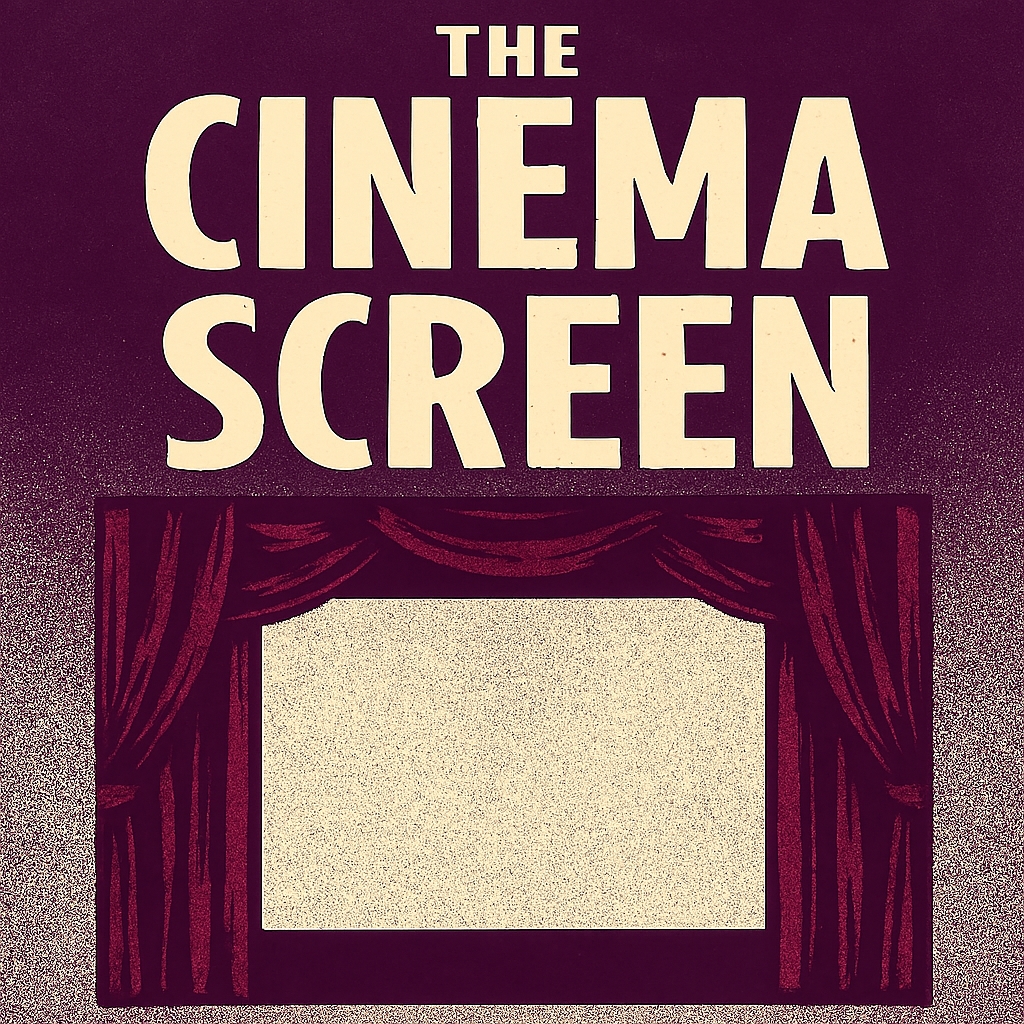
Silver Screen And Cultural Prestige – Cinema As A Symbol Of Elegance
The silver screen was more than a technical innovation – it became a cultural symbol of elegance and prestige. Audiences associated the shimmering glow with sophistication, glamour, and artistry. The nickname silver screen was used in promotional campaigns to elevate cinema above ordinary entertainment. It suggested that films were not just stories but cultural events worthy of admiration.
The glow of the screen became linked to the allure of Hollywood premieres and red carpets. Critics and journalists adopted the phrase to describe the magic of cinema. It carried connotations of timelessness, reinforcing the idea that film was an art form. Even as technology advanced, the nickname persisted in everyday language. The silver screen thus became a metaphor for cinema’s cultural prestige.
| Aspect | Cultural Impact | Audience Perception |
|---|---|---|
| Glamour | Elevated cinema | Seen as sophisticated |
| Prestige | Linked to Hollywood | Symbol of artistry |
| Promotion | Used in campaigns | Reinforced cultural value |
| Timelessness | Persisted in language | Enduring metaphor |
Silver Screen And The Golden Age – Hollywood’s Dream Factory
During Hollywood’s golden age, the silver screen became synonymous with stardom and spectacle. Stars were celebrated as icons whose fame was magnified by the shimmering glow of projection. The phrase silver screen was used to describe the dream factory that produced cultural legends. Audiences embraced the nickname as part of cinema’s identity. It symbolized the glamour of premieres, the artistry of directors, and the magic of storytelling. The silver screen carried connotations of timeless elegance. Even as films transitioned from silent to sound, the phrase persisted. It became shorthand for the cultural aura of Hollywood. The silver screen was inseparable from the dream factory’s rise. Its legacy was cemented in the language of film criticism and fan culture.
- Stars were celebrated as icons
- The phrase described Hollywood’s dream factory
- Audiences embraced it as cinema’s identity
- It symbolized glamour and artistry
- It carried connotations of elegance
- It persisted through technological transitions
- It became shorthand for Hollywood’s aura
- It was inseparable from stardom
- It shaped film criticism and fan culture
- It defined the golden age of cinema
Silver Screen And Audience Immersion – The Shared Experience
The silver screen transformed cinema into a communal spectacle. Audiences were mesmerized by the brilliance of silver-coated screens. The glow created a sense of immersion that ordinary surfaces could not achieve. Films appeared sharper, brighter, and more dramatic, enhancing emotional impact. The nickname silver screen captured this enchantment perfectly. It became part of everyday speech, symbolizing the shared magic of movies. Even as projection technology advanced, audiences continued to use the phrase. It reflected the emotional bond between viewers and cinema. The silver screen was both a technical marvel and a cultural phenomenon. Its legacy endures in the way audiences describe their love of film.
| Feature | Audience Impact | Cultural Meaning |
|---|---|---|
| Brightness | Enhanced immersion | Symbol of magic |
| Contrast | Heightened drama | Emotional resonance |
| Communal Viewing | Shared spectacle | Cultural phenomenon |
| Nickname | Everyday speech | Enduring metaphor |
Silver Screen And Global Reach – A Universal Metaphor
The silver screen was not confined to Hollywood alone. Cinemas around the world adopted silver-coated screens to improve projection. The phrase spread internationally, becoming a universal synonym for film. Local film industries embraced the nickname to elevate their productions. The silver screen thus became a global metaphor for storytelling through film. It transcended borders and languages, uniting cultures through shared experiences. Even today, the phrase is recognized worldwide. Its legacy reflects cinema’s universal appeal.
- Silver screens were adopted globally
- The phrase spread internationally
- It became a universal synonym for film
- Local industries embraced the nickname
- Audiences associated it with magic
- It symbolized cultural prestige worldwide
- It transcended borders and languages
- It united cultures through cinema
- It remains globally recognized
- It reflects universal appeal
Silver Screen And Technological Shifts – From Silver To Digital
As cinema evolved, new technologies replaced silver coatings. Aluminum and other reflective materials became standard in mid-20th century theaters. Later, digital projection transformed the industry entirely. Yet the phrase silver screen persisted despite these changes. It no longer referred to actual silver but to the cultural aura of cinema. The nickname carried forward the glamour of Hollywood’s golden age. Audiences continued to use it as a synonym for movies. The persistence of the phrase showed its symbolic power. It was no longer tied to technology but to the identity of film itself. The silver screen became timeless, surviving every transition.
| Era | Technology | Impact |
|---|---|---|
| Mid-20th Century | Aluminum coatings | Improved projection |
| Late 20th Century | New reflective materials | Adapted to color films |
| Modern Era | Digital projection | Transformed industry |
| Cultural Legacy | Phrase persisted | Symbolic power endured |
Silver Screen And Language – A Phrase That Endures
The silver screen entered everyday language as a synonym for cinema. It was used in journalism, criticism, and casual conversation. The phrase carried connotations of glamour and artistry. It symbolized the timeless magic of movies. Even as technology advanced, the nickname persisted. It became part of cultural identity, linking audiences emotionally to film. The silver screen was more than a technical description. It was a metaphor for the enchantment of storytelling. Its endurance reflects cinema’s lasting impact on culture.
- Entered everyday language
- Used in journalism and criticism
- Carried connotations of glamour
- Symbolized timeless magic
- Persisted despite technology changes
- Became part of cultural identity
- Linked audiences emotionally to film
- More than technical description
- Metaphor for storytelling enchantment
- Continues to inspire today
Silver Screen And Cultural Memory – Preserving The Glow
The silver screen remains embedded in cultural memory. It symbolizes the golden age of cinema and the glamour of Hollywood. Audiences recall the shimmering glow as part of film’s identity. The nickname persists in retrospectives, documentaries, and histories. It carries connotations of timeless artistry and sophistication. The silver screen is remembered as both a technical innovation and a cultural metaphor. Its legacy endures in the way people describe cinema. Even in the digital age, the phrase retains its resonance. It reminds us of the origins of film’s magic. The silver screen is a timeless symbol of cultural memory.
| Aspect | Cultural Memory | Legacy |
|---|---|---|
| Golden Age | Symbol of glamour | Preserved in retrospectives |
| Glow | Part of film identity | Remembered by audiences |
| Nickname | Used in histories | Enduring metaphor |
| Legacy | Technical and cultural | Timeless symbol |
Silver Screen And Modern Cinema – A Poetic Synonym
In modern cinema, the silver screen is no longer a literal description. Digital projection dominates theaters worldwide. Yet the phrase persists as a poetic synonym for film. It carries connotations of glamour, artistry, and cultural prestige. Audiences continue to use it in everyday language. Critics and journalists employ it to evoke cinema’s magic. The silver screen remains a timeless metaphor. It symbolizes the enduring enchantment of storytelling through film. Even in the digital age, the nickname resonates. The silver screen is a poetic reminder of cinema’s origins.
- Digital projection dominates theaters
- Phrase persists as poetic synonym
- Carries connotations of glamour
- Used in everyday language
- Employed by critics and journalists
- Remains timeless metaphor
- Symbolizes storytelling enchantment
- Resonates in digital age
- Reminds of cinema’s origins
- Endures as cultural symbol
Silver Screen And Legacy – A Timeless Symbol Of Cinema
The silver screen began as a technical innovation but grew into a cultural legend. Its shimmering glow transformed films into luminous spectacles. Audiences embraced the phrase as a symbol of glamour and artistry. Even as technology evolved, the nickname persisted. Today, the silver screen remains a poetic synonym for cinema. It reminds us of the innovation that shaped film’s origins. It also reflects the enchantment that continues to define movies. The legacy of the silver screen is both technical and cultural. It endures as a timeless symbol of cinematic magic. Its glow continues to inspire audiences worldwide.
| Origin | Transformation | Legacy |
|---|---|---|
| Technical Innovation | Cultural Legend | Timeless Symbol |
| Shimmering Glow | Luminous Spectacle | Poetic Synonym |
| Audience Embrace | Symbol Of Glamour | Enduring Metaphor |
| Persistence | Cultural Identity | Global Inspiration |
Silver Screen And Storytelling – The Glow Of Narrative
The silver screen was not only a technical marvel but also a stage for storytelling. Its shimmering glow enhanced the emotional resonance of films, making narratives feel larger than life. Directors and writers relied on the brilliance of projection to amplify dramatic tension. Audiences were drawn into tales of romance, adventure, and tragedy with heightened intensity. The silver screen became a canvas for human imagination. Its glow symbolized the power of stories to captivate and inspire. Even simple plots gained grandeur when projected on silver-coated surfaces. The nickname silver screen thus carried connotations of narrative magic. It reminded audiences that cinema was more than entertainment. It was a shared journey into the world of imagination.
| Narrative Element | Silver Screen Impact | Audience Response |
|---|---|---|
| Romance | Glow enhanced intimacy | Emotional connection |
| Adventure | Brightness amplified spectacle | Sense of wonder |
| Tragedy | Contrast deepened shadows | Heightened empathy |
| Imagination | Screen as canvas | Collective inspiration |
Silver Screen And The Language Of Criticism – A Term Of Authority
Film critics adopted the phrase silver screen as a term of authority. It became shorthand for the industry in reviews and essays. The piece of pop culture heritage carried connotations of glamour and artistry, reinforcing cinema’s cultural prestige. Critics used it to elevate discussions of film beyond mere entertainment. The silver screen symbolized the seriousness of cinema as an art form. It was employed in both academic and popular writing. The phrase gave weight to arguments about film’s cultural impact. It became part of the vocabulary of criticism worldwide. Even today, critics use it to evoke cinema’s magic. The silver screen thus shaped the language of film discourse.
- Critics adopted the phrase silver screen
- It became shorthand for the industry
- Carried connotations of glamour and artistry
- Elevated discussions beyond entertainment
- Symbolized seriousness of cinema
- Used in academic and popular writing
- Gave weight to cultural arguments
- Became part of critical vocabulary
- Still used to evoke cinema’s magic
- Shaped film discourse worldwide
Silver Screen And Cultural Identity – A Shared Symbol
The silver screen became part of cultural identity across generations. It symbolized the glamour of Hollywood and the artistry of cinema. Families and communities gathered in theaters to share the spectacle. The nickname captured the enchantment of these communal experiences. It reinforced the idea that cinema was a cultural institution. The silver screen was remembered as part of childhood, adolescence, and adulthood. It became a marker of generational identity. Even as technology changed, the nickname persisted in cultural memory. The silver screen symbolized continuity across eras. It remains a shared symbol of cinema’s enduring power.
| Generation | Experience | Cultural Identity |
|---|---|---|
| Early 20th Century | Silent films | Birth of cinema culture |
| Mid 20th Century | Golden age Hollywood | Glamour and artistry |
| Late 20th Century | Color and sound | Expanding narratives |
| Modern Era | Digital projection | Persistence of metaphor |
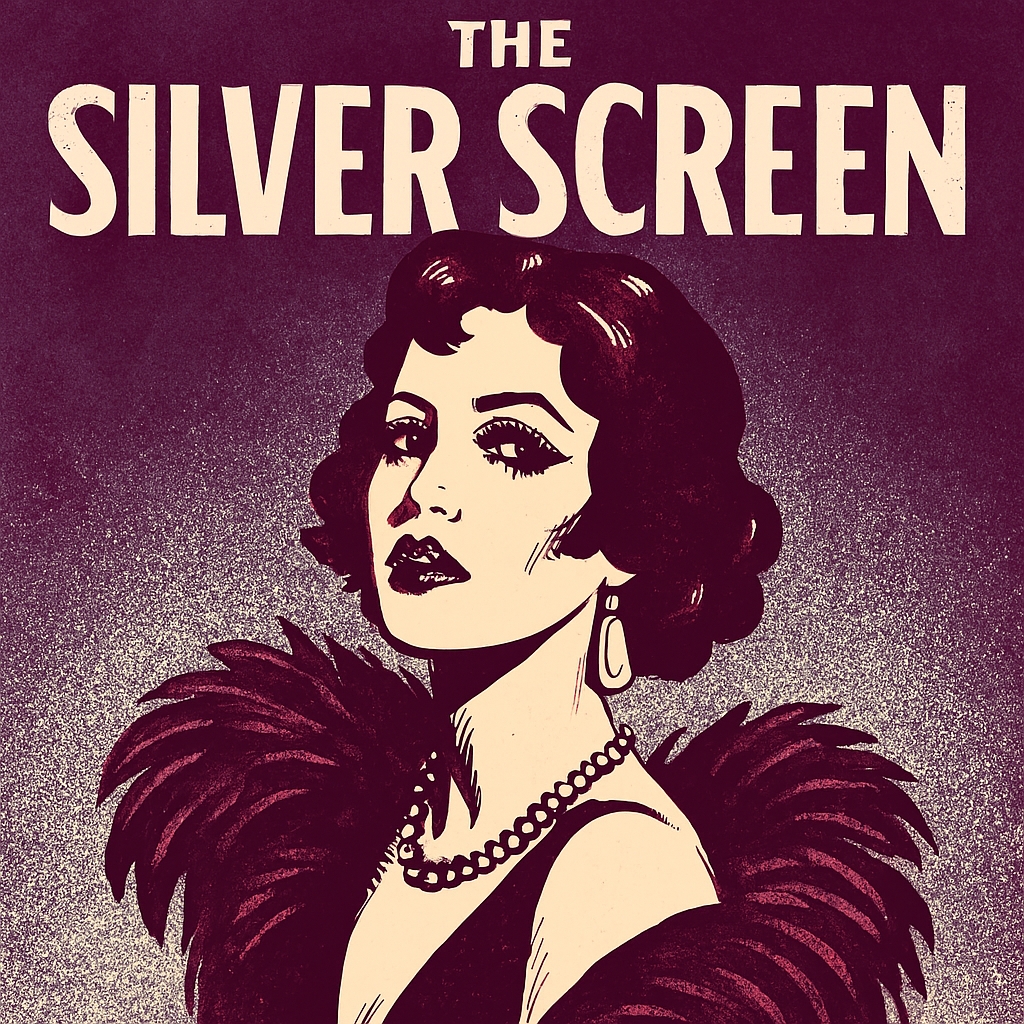
Silver Screen And Technological Innovation – The Catalyst Of Progress
The silver screen was a catalyst for technological innovation in cinema. Its reflective coating inspired further advances in projection. Engineers sought ways to improve brightness, clarity, and color reproduction. The nickname silver screen symbolized this spirit of progress. It reminded audiences of the industry’s commitment to innovation. The glow of silver-coated screens set a standard for visual excellence. Later technologies built upon this foundation. Digital projection owes part of its legacy to the silver screen. The nickname thus represents both tradition and progress. It is a reminder that cinema has always been driven by innovation.
- Silver screen catalyzed innovation
- Inspired advances in projection
- Engineers improved brightness and clarity
- Symbolized spirit of progress
- Reminded audiences of innovation
- Set standard for excellence
- Later technologies built upon it
- Digital projection owes legacy
- Represents tradition and progress
- Cinema driven by innovation
Silver Screen And Global Language – A Universal Term
The silver screen became a universal term recognized across cultures. It was translated into multiple languages but retained its symbolic meaning. Audiences worldwide understood it as shorthand for cinema. The nickname carried connotations of glamour and artistry regardless of geography. It united cultures through shared cinematic experiences. The silver screen thus became part of global language. It symbolized the universality of storytelling through film. Even in regions with distinct traditions, the phrase was embraced. It reflected cinema’s ability to transcend borders. The silver screen remains a global metaphor for the magic of movies.
| Region | Translation | Meaning |
|---|---|---|
| Europe | Adopted widely | Symbol of prestige |
| Asia | Local adaptations | Modernity and glamour |
| Latin America | Popularized in cities | Cultural sophistication |
| Global | Universal recognition | Shared cinematic metaphor |
Silver Screen And Memory – Nostalgia And Legacy
The silver screen evokes nostalgia for the golden age of cinema. Audiences recall the shimmering glow as part of their cultural memory. The nickname persists in retrospectives and documentaries. It symbolizes the glamour of Hollywood’s past. The silver screen is remembered as both a technical innovation and a cultural metaphor. Its legacy endures in the way people describe cinema. Even in the digital age, the phrase retains its resonance. It reminds us of the origins of film’s magic. The silver screen is a timeless symbol of nostalgia and legacy. Its glow continues to inspire audiences worldwide.
- Evokes nostalgia for golden age
- Glow remembered in cultural memory
- Persists in retrospectives
- Symbolizes Hollywood glamour
- Technical innovation and metaphor
- Legacy endures in language
- Resonates in digital age
- Reminds of film’s origins
- Timeless symbol of nostalgia
- Inspires audiences worldwide
Silver Screen And Modern Usage – A Poetic Reminder
In modern usage, the silver screen is no longer literal. Digital projection dominates theaters worldwide. Yet the phrase persists as a poetic reminder of cinema’s origins. It carries connotations of glamour, artistry, and cultural prestige. Audiences continue to use it in everyday language. Critics employ it to evoke cinema’s magic. The silver screen remains a timeless metaphor. It symbolizes the enduring enchantment of storytelling through film. Even in the digital age, the nickname resonates. The silver screen is a poetic reminder of cinema’s legacy.
| Usage | Meaning | Impact |
|---|---|---|
| Everyday Speech | Synonym for movies | Cultural continuity |
| Criticism | Evokes glamour | Artistic resonance |
| Journalism | Symbol of industry | Prestige and authority |
| Modern Era | Poetic reminder | Timeless metaphor |
Silver Screen And Legacy – A Timeless Cultural Symbol
The silver screen began as a technical innovation but grew into a cultural legend. Its shimmering glow transformed films into luminous spectacles. Audiences embraced the phrase as a symbol of glamour and artistry. Even as technology evolved, the nickname persisted. Today, the silver screen remains a poetic synonym for cinema. It reminds us of the innovation that shaped film’s origins. It also reflects the enchantment that continues to define movies. The legacy of the silver screen is both technical and cultural. It endures as a timeless symbol of cinematic magic. Its glow continues to inspire audiences worldwide.
- Technical innovation became cultural legend
- Glow transformed films into spectacles
- Phrase symbolized glamour and artistry
- Persisted through technological change
- Remains poetic synonym for cinema
- Reminds of innovation origins
- Reflects enchantment of movies
- Legacy is technical and cultural
- Endures as timeless symbol
- Inspires audiences worldwide
Silver Screen And Artistic Expression – Cinema As A Visual Art
The silver screen was more than a projection surface – it became a canvas for artistic expression. Directors and cinematographers relied on its reflective glow to craft striking compositions. Shadows appeared deeper, highlights more luminous, and every frame carried heightened drama. The brilliance of silver-coated screens amplified the artistry of black-and-white cinema. Audiences experienced films as living paintings, shimmering with intensity. The nickname silver screen thus symbolized cinema’s visual power. It reminded viewers that film was not only narrative but also art. The glow elevated ordinary scenes into extraordinary spectacles. The silver screen became inseparable from the artistry of cinema. Its legacy continues to inspire filmmakers today.
| Artistic Element | Silver Screen Effect | Audience Response |
|---|---|---|
| Shadows | Deeper and dramatic | Heightened tension |
| Highlights | More luminous | Emotional resonance |
| Composition | Amplified brilliance | Visual immersion |
| Frames | Living paintings | Sense of artistry |
Silver Screen And Cultural Influence – Shaping Society
The silver screen shaped cultural values and social imagination. Films projected on silver-coated screens influenced fashion, language, and behavior. Audiences imitated the styles of stars, reinforcing Hollywood’s cultural dominance. The nickname silver screen symbolized this influence, linking cinema to everyday life. It carried connotations of glamour that extended beyond theaters. The glow of the screen became part of cultural identity. Communities gathered to share stories that shaped collective memory. The silver screen thus became a force of cultural influence. It reflected society while also shaping it. Its legacy endures in the way cinema continues to impact culture.
- Shaped cultural values and imagination
- Influenced fashion and behavior
- Audiences imitated stars
- Symbolized Hollywood’s dominance
- Extended glamour beyond theaters
- Became part of cultural identity
- Gathered communities together
- Shaped collective memory
- Reflected and influenced society
- Legacy endures in cultural impact
Silver Screen And Innovation Legacy – Foundation For Progress
The silver screen laid the foundation for progress in cinema technology. Its a reflective coating inspired engineers to pursue greater clarity, a little shine and better brightness. Later innovations in color projection built upon this legacy. The nickname silver screen symbolized the spirit of technological advancement. It reminded audiences that cinema was always evolving. The glow of silver-coated screens set a standard for excellence. Digital projection owes part of its heritage to this innovation. The silver screen thus represents both tradition and progress. It is a reminder that film has always been driven by innovation. Its legacy continues to shape the future of cinema.
| Innovation | Silver Screen Contribution | Legacy |
|---|---|---|
| Brightness | Improved reflectivity | Standard of excellence |
| Clarity | Enhanced contrast | Inspired engineers |
| Color Projection | Built on silver legacy | Expanded possibilities |
| Digital Era | Inherited innovation | Symbol of progress |
Silver Screen And Timeless Symbolism – Beyond Technology
The silver screen transcended its technical origins to become a timeless symbol. It carried connotations of glamour, artistry, and cultural prestige. Audiences embraced it as shorthand for cinema itself. The nickname persisted and was kept even after silver coatings disappeared. It symbolized continuity across generations. The silver screen became a metaphor for storytelling enchantment. It reminded audiences of the magic that defined film’s origins. Even in the digital age, the phrase resonates. The silver screen is more than a historical artifact. It is a timeless symbol of cinema’s enduring power.
- Transcended technical origins
- Carried glamour and artistry
- Became shorthand for cinema
- Persisted after coatings disappeared
- Symbolized continuity across generations
- Metaphor for storytelling enchantment
- Reminded of film’s origins
- Resonates in digital age
- More than historical artifact
- Timeless symbol of cinema
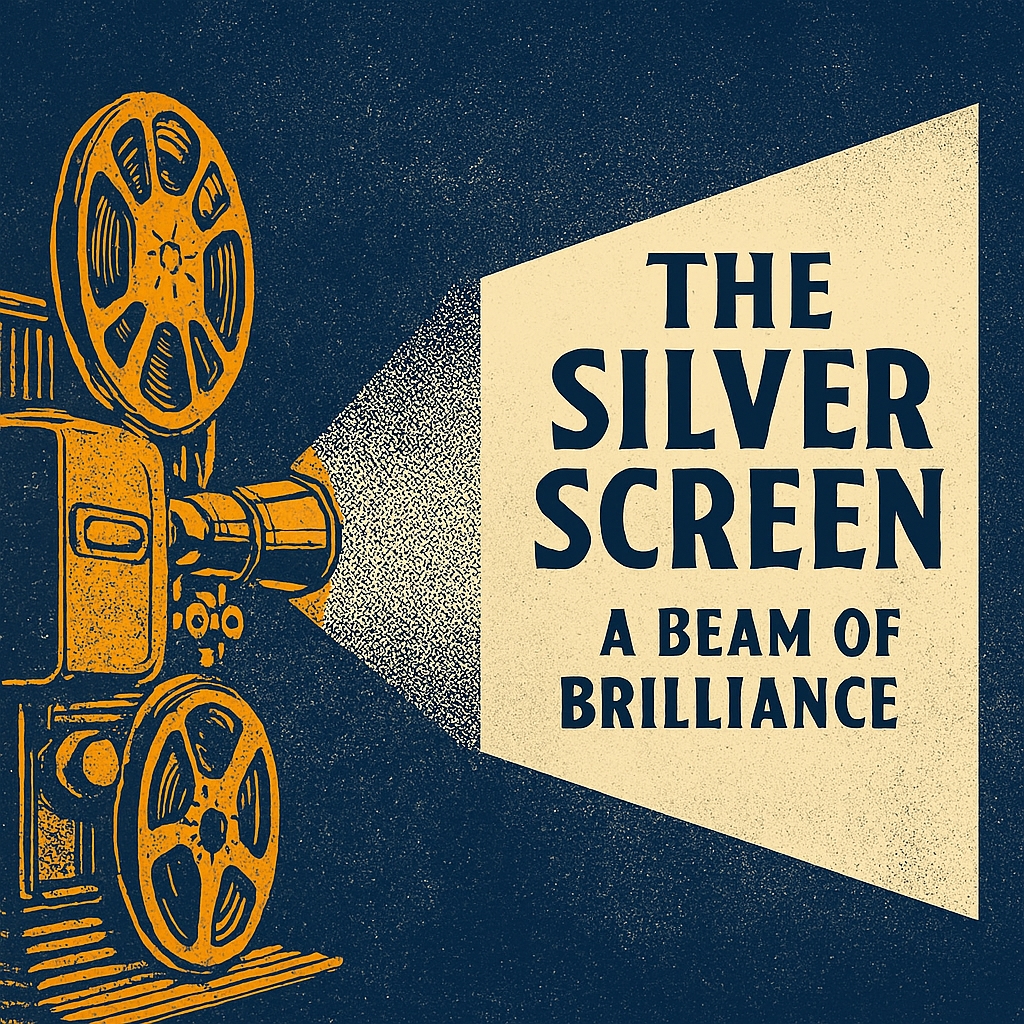
Silver Screen And Enduring Legacy – A Cultural Metaphor
The silver screen began as a technical necessity but grew into a cultural metaphor. Its shimmering glow transformed films into luminous spectacles. Audiences embraced the phrase as a symbol of glamour and artistry. Even as technology evolved, the nickname persisted. Today, the silver screen remains a poetic synonym for cinema. It reminds us of the innovation that shaped film’s origins. It also reflects the enchantment that continues to define movies. The legacy of the silver screen is both technical and cultural. It endures as a timeless symbol of cinematic magic. Its glow continues to inspire audiences worldwide.
| Origin | Transformation | Legacy |
|---|---|---|
| Technical Necessity | Cultural Metaphor | Timeless Symbol |
| Shimmering Glow | Luminous Spectacle | Poetic Synonym |
| Audience Embrace | Symbol Of Glamour | Enduring Metaphor |
| Persistence | Cultural Identity | Global Inspiration |
Conclusion – The Enduring Glow Of The Silver Screen
The silver screen began as a technical innovation but grew into a cultural legend. Its shimmering glow transformed films into luminous spectacles. Audiences embraced the phrase as a symbol of glamour and artistry. Even as technology evolved, the nickname persisted. Today, the silver screen remains a poetic synonym for cinema. It reminds us of the innovation that shaped film’s origins. It also reflects the enchantment that continues to define movies. The legacy of the silver screen is both technical and cultural. It endures as a timeless symbol of cinematic magic.
Join The Discussion – Share Your Thoughts
The silver screen is more than a historical artifact. It is a living metaphor for cinema’s power. What does the phrase mean in to you in this idea. Does it still capture the magic of movies or has technology changed the way we see film.
#SilverScreen #FilmHistory #CinemaMagic #HollywoodLegacy #CulturalSymbolism #MovieIndustry






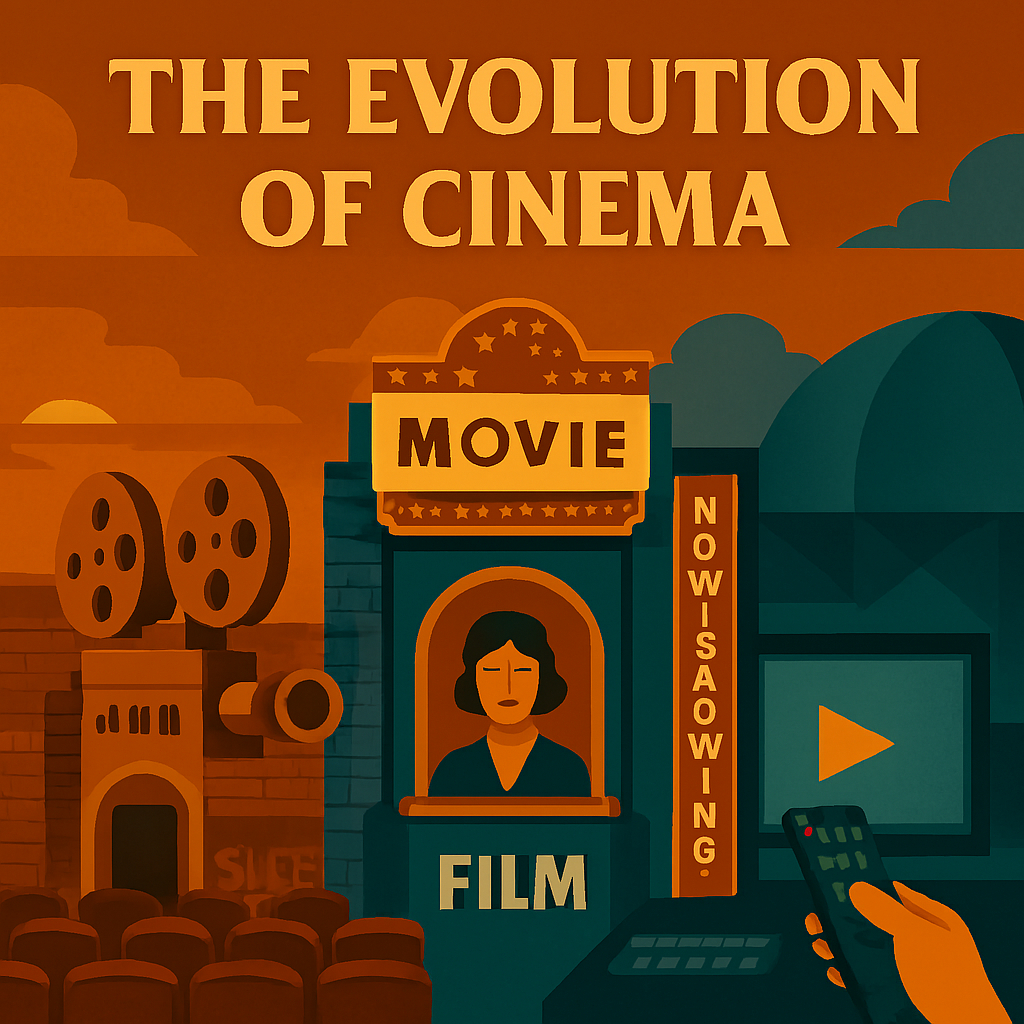




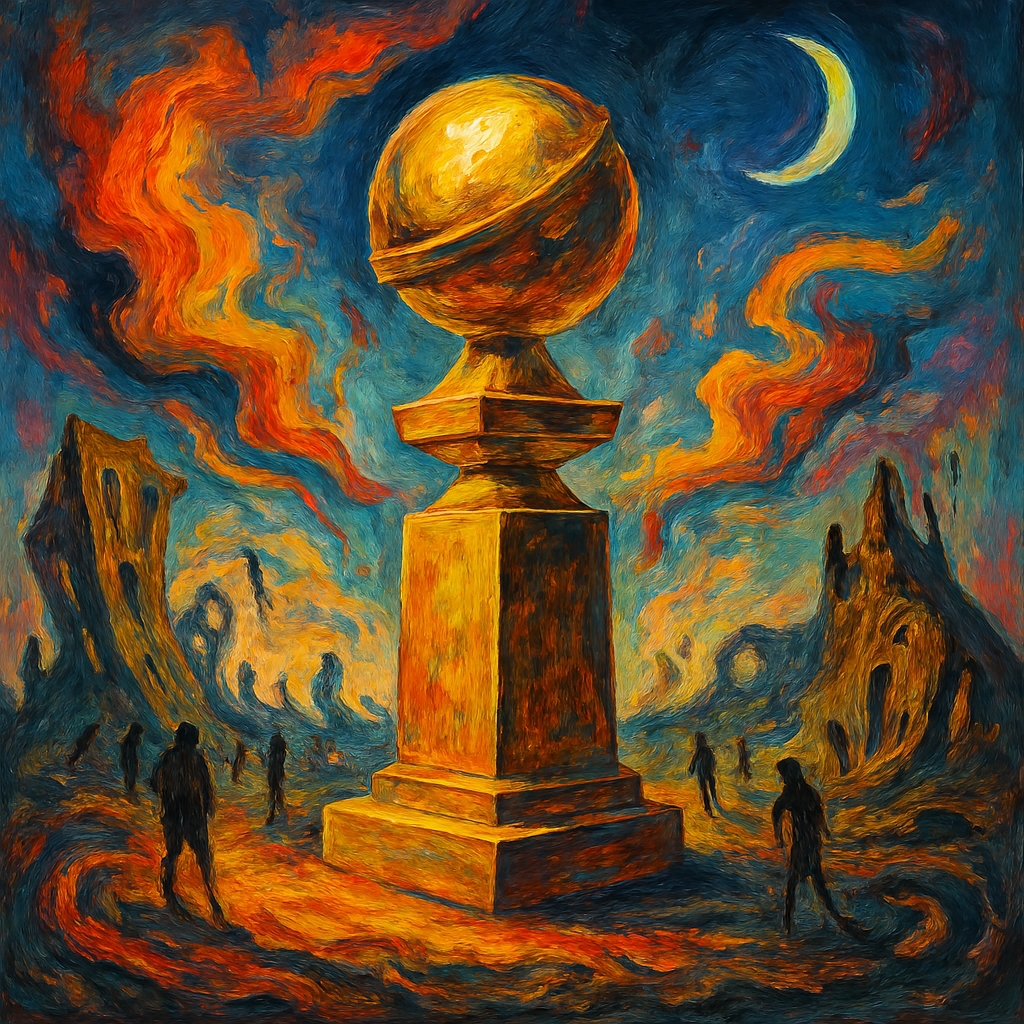



Leave a Reply